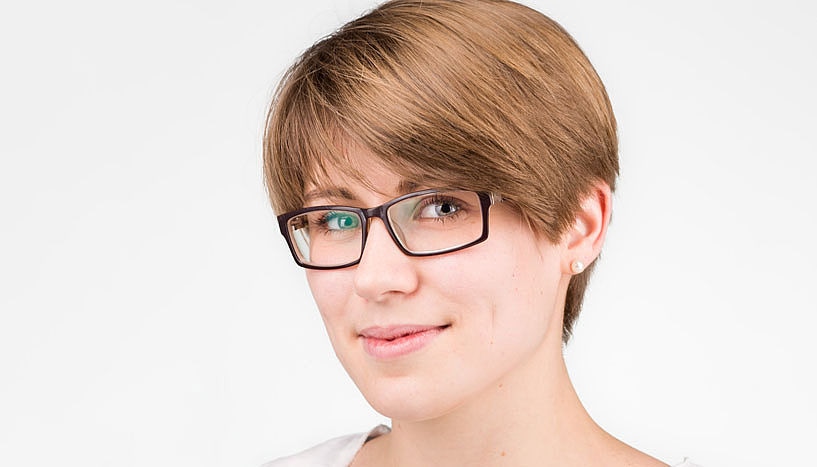Dec 7 2017
The distinction between rings formed of the same material and linear chains is that although the molecular building blocks are the same, from a mathematical point of view, topologies of the two structures, linear chain and ring, are different.
This distinction can be easily identified on a macroscopic scale, such as in the case of a gold bar and a golden ring. However, it is not so easy on the microscopic scale. Lisa Weiss and Christos Likos, physicists from the University of Vienna, and Arash Nikoubashman from the Johannes-Gutenberg University of Mainz analyzed approaches to isolate nanoparticles and microparticles of different topology. The outcomes of the study have been published in ACS Macro Letters, a high-impact journal.
 The team around Lisa Weiss has developed a reliable strategy to separate chemically identical macromolecules. CREDIT: Oleg Domanov.
The team around Lisa Weiss has developed a reliable strategy to separate chemically identical macromolecules. CREDIT: Oleg Domanov.
The uniquely mathematical characteristic, circular or linear, can have critical outcomes in the world of materials. Due to the fact that there are no ends for circular molecules, which might initiate degradation, they are less entangled and highly resistant. Nature is benefited by this distinctive characteristic of circular molecules to enhance the resilience of RNA and DNA against degeneration. Topology has a significant part in biology as well as when molecules break out of equilibrium—ring and linear molecules flow distinctly, similar to their mixtures.
Such a distinction in flow can be elucidated by taking spaghetti as a metaphor for linear molecules and stirring a pot of spaghetti as a metaphor for their flow—single noodles extend along the flow direction while still being entangled. Consider stirring ring-form pasta at the same time as spaghetti with their ends fixed together—circular pasta gets easily oriented toward the flow direction in contrast to linear Spaghetti, and rings are entangled less, rendering stirring very easy. However, it is highly difficult to separate a mix of ring-form and linear pasta from one pot into two isolated, high-purity systems because the molecular building blocks are precisely identical. The same dough is used to make both the noodle topologies. Laboriously, each one has to be hand-picked to differentiate whether it is a ring-form pasta or a spaghetti. On a microscopic scale, this process is impossible; therefore, the creation of innovative materials dependent on disparate topologies is hampered, and also it is hard to investigate the topology in biological systems. Hence, efficacious and innovative isolation methods are required.
Scientists from the University of Vienna and the Johannes-Gutenberg-University of Mainz created an automatised approach to accurately isolate circular molecules and linear molecules. The researchers used computer simulations to demonstrate the capability of microfluidic channels adorned with attractive spots, which equally and strongly pull the molecular building blocks of ring and linear molecules. According to Lisa Weiss belonging to the Computational Physics Group at the University of Vienna, in contrast to linear chains that are rendered immovable on these spots, ring molecules have the ability to roll through them. This rolling movement is feasible only for topologies that have a closed contour line. In order to clean the stuck chains from the filter, a non-solvent for the chains is flushed through the channel. Similar to oil in water, the molecules do not get dissolved in the solvent. Hence, the chains get crumbled and detached, and eventually, the chains are carried off by the flow and the filter gets cleaned.
The European Union’s Horizon 2020 research and innovation program has funded the study under grant agreement NO 674979-Nanotrans.